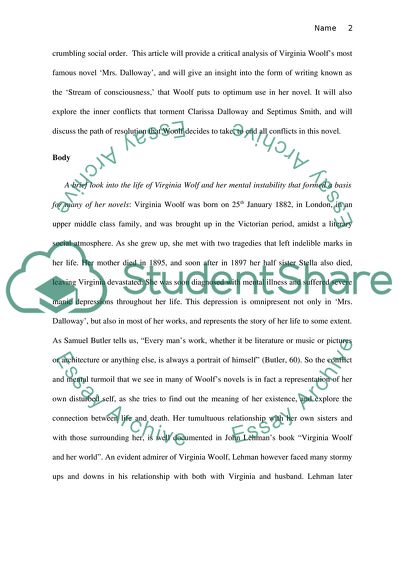Cite this document
(Critical Analysis of Mrs. Dalloway by Virginia Woolf Book Report/Review, n.d.)
Critical Analysis of Mrs. Dalloway by Virginia Woolf Book Report/Review. https://studentshare.org/literature/1736699-essay-on-mrs-dalloway
Critical Analysis of Mrs. Dalloway by Virginia Woolf Book Report/Review. https://studentshare.org/literature/1736699-essay-on-mrs-dalloway
(Critical Analysis of Mrs. Dalloway by Virginia Woolf Book Report/Review)
Critical Analysis of Mrs. Dalloway by Virginia Woolf Book Report/Review. https://studentshare.org/literature/1736699-essay-on-mrs-dalloway.
Critical Analysis of Mrs. Dalloway by Virginia Woolf Book Report/Review. https://studentshare.org/literature/1736699-essay-on-mrs-dalloway.
“Critical Analysis of Mrs. Dalloway by Virginia Woolf Book Report/Review”. https://studentshare.org/literature/1736699-essay-on-mrs-dalloway.


